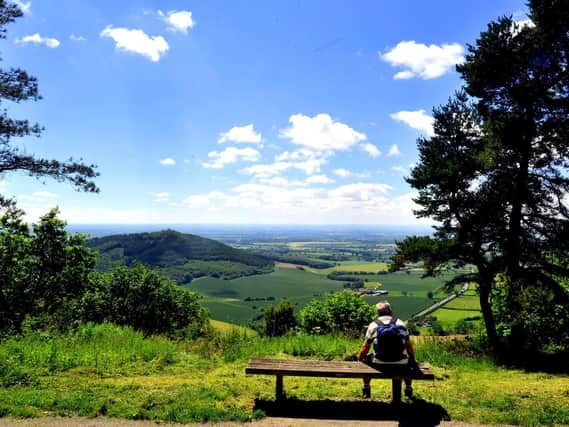Battle of Byland: Memorial set to be created to remember obscure 14th Century battle between England and Scotland


It comes after a quarter of a century of research revealed the battlefield was at one of the North’s greatest landmarks.
The North York Moors National Park Authority has lodged a planning application with itself to site a single piece of tapered sandstone up to six foot high commemorating the Battle of Byland, ahead of its 700th anniversary in October next year, at Sutton Bank.
Advertisement
Hide AdAdvertisement
Hide AdThe move comes as the authority strives to promote opportunities for the public understanding and enjoyment of the special qualities of the park and following years of studies into the site of the Scottish Wars of Independence battle, the most significant since Bannockburn.
Papers submitted with the application reveal The Battlefields Trust had recently concluded the main battle, previously been thought to have taken place to the east at Scawton Moor, between Rievaulx and Byland abbeys, was close to the main Thirsk to Scarborough road.
Evidence that the plateau, between the summit of Sutton Bank, the Yorkshire Gliding Club and the White Horse of Kilburn, was the focus of the battle started mounting in 1996 when a survey was commissioned of the east end of a boundary earthwork known as the Casten Dyke North found part of it was too sharply defined to be prehistoric in origin.
Five years later an English Heritage survey of Roulston Scar Hillfort, about 1,000 metres across the plateau, revealed that another dyke long thought to have been prehistoric was “crisp in appearance” and likely to date from a major historic event in the area.
Advertisement
Hide AdAdvertisement
Hide AdLater studies of the northern rampart of the hillfort found it had been reinforced with a sizeable palisade and concluded the main historic event recorded in the area was the Battle of Byland, which historians had said took place “on a nearby hilltop”, as King Edward rested at nearby Rievaulx Abbey.
It is thought up to 8,000 Scots and an English force of up to 10,000 men played a role in the battle, but only a few thousand were involved in the fighting at Sutton Bank.
The Battlefields Trust has concluded English resistance was finally broken when King Robert sent a group of Highlanders to to scale the more lightly defended cliffs to the south, a medieval track still known as Scotch Corner, after which the breakthrough became a rout.
A bequest from the North Yorkshire Moors Association has been made available for an interpretation panel and memorial stone, to be located across the A170 at a site near the top of the escarpment on an easy access footpath, close to the National Park Centre.
Advertisement
Hide AdAdvertisement
Hide AdChris Pye, manager at Sutton Bank National Park Centre, said the proposal represented new opportunities to attract visitors to the site and share information and stories with the public.
He said: “This particular development not only does this, but is already providing a legacy of events, guided walks and archaeological survey work.”
Comment Guidelines
National World encourages reader discussion on our stories. User feedback, insights and back-and-forth exchanges add a rich layer of context to reporting. Please review our Community Guidelines before commenting.